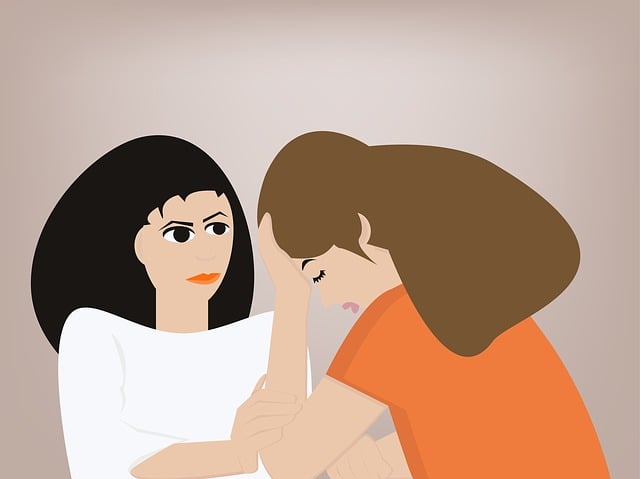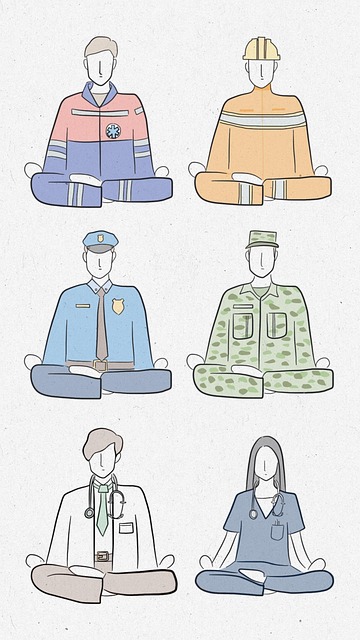Risk assessment and harm minimization are paramount in Arvada Independent Medical Evaluations Therapy, ensuring client safety through comprehensive evaluations and tailored strategies. Qualified professionals identify risks, implement emotional regulation techniques, and offer burnout prevention measures to create a positive therapeutic environment. This multi-faceted approach includes personalized interventions, regular communication, and support systems, fostering resilience and enhancing client outcomes. By prioritizing these practices, Arvada's therapy community promotes trust, improves safety, and enhances the overall therapeutic experience for all involved.
In Arvada, ensuring client safety through comprehensive risk assessment and harm minimization planning is paramount for therapy practices. This article delves into these critical components, providing a foundational understanding of risk assessment for safe therapy practices. We explore the pivotal role of independent medical evaluations (IMEs) in identifying risks and guiding harm minimization strategies. Additionally, practical approaches are outlined for implementing effective harm minimization plans within Arvada’s diverse therapy landscape.
- Understanding Risk Assessment: A Foundation for Safe Therapy Practices
- The Role of Independent Medical Evaluations (IMEs) in Harm Minimization
- Strategies for Effective Harm Minimization Planning in Therapy Settings
- Implementing and Monitoring Risks: Ensuring Client Safety in Arvada's Therapy Landscape
Understanding Risk Assessment: A Foundation for Safe Therapy Practices

Risk assessment is a fundamental process in healthcare, especially within the realm of independent medical evaluations and therapy practices. It involves a thorough examination of potential hazards and their likelihood to cause harm. For Arvada therapists and evaluators, understanding this concept is crucial for ensuring safe and effective treatment. By identifying risks, practitioners can implement tailored strategies to minimize them, thereby fostering a positive therapeutic environment.
This process goes beyond merely avoiding dangers; it empowers healthcare providers with the knowledge to design personalized burnout prevention strategies for themselves and their patients. Moreover, integrating emotional regulation techniques and incorporating mental health education programs into practice can further mitigate risks. These proactive measures not only enhance patient outcomes but also contribute to the overall well-being of both care providers and clients.
The Role of Independent Medical Evaluations (IMEs) in Harm Minimization

In harm minimization planning, Arvada Independent Medical Evaluations (IMEs) play a pivotal role by providing comprehensive assessments of an individual’s physical and mental health. These evaluations go beyond standard medical check-ups; they involve thorough analyses conducted by qualified healthcare professionals. IMEs are instrumental in identifying underlying conditions or factors that may contribute to harm, especially in therapy settings. By integrating this data into risk assessment strategies, therapists and care managers can develop tailored interventions aimed at stress management and mood management, thereby enhancing client safety.
Moreover, independent medical evaluations offer a neutral perspective, which is crucial for unbiased decision-making. The insights gained from these assessments enable professionals to employ effective communication strategies that build trust with clients. This transparency fosters a safe environment where individuals feel comfortable discussing their experiences, concerns, and vulnerabilities, all of which are essential elements in the overall harm minimization process.
Strategies for Effective Harm Minimization Planning in Therapy Settings

Effective harm minimization planning in therapy settings involves a multi-faceted approach that combines comprehensive risk assessment and proactive interventions. The Arvada Independent Medical Evaluations Therapy team recognizes that identifying potential risks is just the first step. To ensure client safety, therapists must implement tailored strategies that address individual needs. This may include Burnout Prevention Strategies for Healthcare Providers, such as integrating Self-Awareness Exercises and Stress Management Workshops within the organizational framework.
By fostering an environment that prioritizes emotional well-being and resilience, therapy settings can minimize potential harms. Regularly scheduled check-ins, clear communication protocols, and access to support systems are crucial components of a robust harm minimization plan. These measures empower therapists to quickly address emerging issues, ensuring client safety and facilitating more effective therapeutic outcomes.
Implementing and Monitoring Risks: Ensuring Client Safety in Arvada's Therapy Landscape

In Arvada’s vibrant therapy landscape, ensuring client safety through robust risk assessment and harm minimization planning is paramount. It involves a meticulous process where qualified professionals conduct independent medical evaluations to identify potential risks associated with various therapeutic approaches. These evaluations are instrumental in tailoring treatments to clients’ unique needs while mitigating any adverse effects. By integrating Mind Over Matter principles, therapists can facilitate stress reduction methods and empathy-building strategies, creating a safe and nurturing environment for healing.
Effective monitoring of these risks requires ongoing communication between clients, therapists, and evaluators. Regular check-ins and feedback mechanisms allow for prompt adjustments to treatment plans when needed. This collaborative approach not only ensures client safety but also fosters trust and enhances the overall therapeutic experience in Arvada’s diverse therapy community.
In conclusion, effective risk assessment and harm minimization planning are essential components of safe therapy practices in Arvada. By understanding the foundational principles of risk assessment, leveraging independent medical evaluations (IMEs), and implementing robust strategies for harm minimization, therapists can ensure client safety within their practice settings. These measures not only protect clients but also foster a more responsible and reputable therapy landscape in Arvada.








